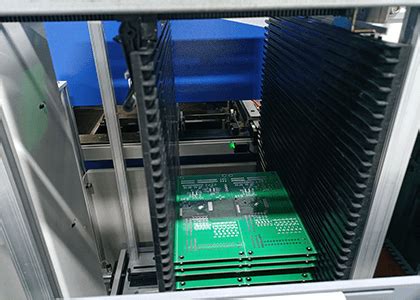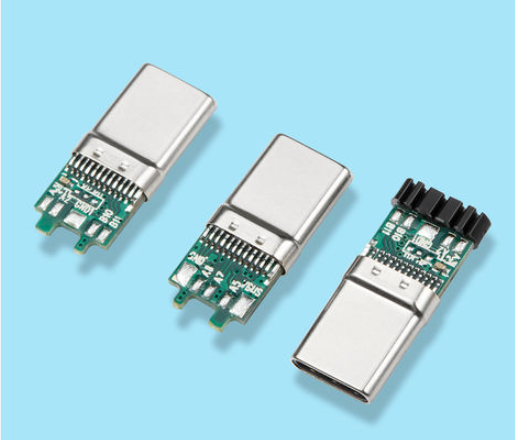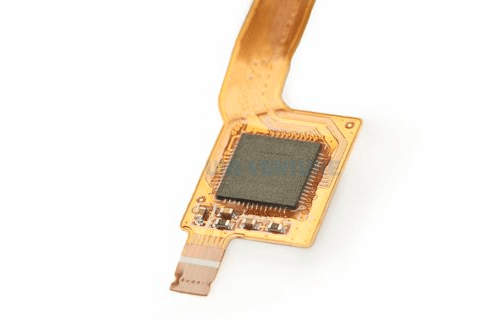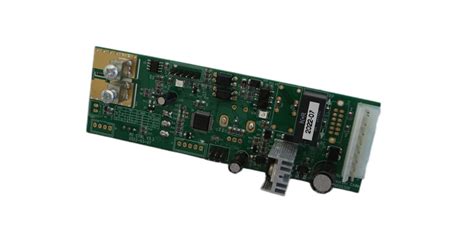Taconic rf 35 pcb
Advantages Of Using Taconic RF 35 PCB In High-Frequency Applications
Taconic RF 35 PCB is a specialized material widely recognized for its exceptional performance in high-frequency applications.
One of the primary advantages of using Taconic RF 35 PCB is its low dielectric constant, which is crucial for maintaining signal integrity at high frequencies.
This characteristic ensures minimal signal loss and distortion, making it an ideal choice for applications such as microwave circuits, RF communication systems, and high-speed digital circuits. Furthermore, the low dielectric constant contributes to reduced signal propagation delay, enhancing the overall efficiency and reliability of the electronic system.
In addition to its low dielectric constant, Taconic RF 35 PCB exhibits a low dissipation factor.
This property is essential for minimizing energy loss in the form of heat, which is particularly important in high-frequency applications where thermal management is a critical concern. The low dissipation factor ensures that the PCB can operate efficiently over a wide range of frequencies without significant power loss, thereby improving the performance and longevity of the electronic components.
Moreover, Taconic RF 35 PCB is known for its excellent thermal stability.
This attribute is vital for maintaining consistent performance under varying environmental conditions. High-frequency applications often involve exposure to fluctuating temperatures, and the thermal stability of Taconic RF 35 PCB ensures that the material’s electrical properties remain stable, thereby preventing performance degradation. This stability is particularly beneficial in aerospace, military, and automotive industries, where reliability and durability are paramount.
Another significant advantage of Taconic RF 35 PCB is its low moisture absorption rate.
Moisture can adversely affect the electrical properties of PCB materials, leading to increased dielectric constant and dissipation factor, which in turn can degrade signal integrity. The low moisture absorption rate of Taconic RF 35 PCB ensures that it maintains its electrical performance even in humid environments, making it suitable for use in a wide range of applications, including outdoor and marine systems.
Furthermore, Taconic RF 35 PCB offers excellent mechanical properties, including high tensile strength and dimensional stability.
These properties are essential for ensuring the structural integrity of the PCB, especially in applications that involve mechanical stress or vibration. The robust mechanical properties of Taconic RF 35 PCB contribute to its durability and reliability, ensuring that the PCB can withstand harsh operating conditions without compromising its performance.
Additionally, Taconic RF 35 PCB is compatible with standard PCB manufacturing processes, which simplifies the production and integration of high-frequency circuits.
This compatibility allows manufacturers to leverage existing infrastructure and expertise, reducing production costs and time-to-market. The ease of fabrication and processing also enables the production of complex and high-density circuit designs, further enhancing the versatility and applicability of Taconic RF 35 PCB in various high-frequency applications.
In conclusion, Taconic RF 35 PCB offers a multitude of advantages for high-frequency applications, including low dielectric constant, low dissipation factor, excellent thermal stability, low moisture absorption, and robust mechanical properties. These attributes ensure superior signal integrity, efficient thermal management, and reliable performance under diverse environmental conditions. The compatibility with standard manufacturing processes further enhances its appeal, making Taconic RF 35 PCB a preferred choice for engineers and designers working on advanced high-frequency electronic systems.
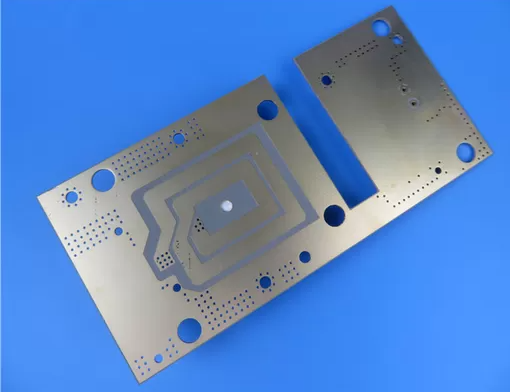
Design Tips For Optimizing Taconic RF 35 PCB Performance
When designing a Taconic RF 35 PCB, optimizing performance requires a meticulous approach that considers various factors influencing signal integrity, thermal management, and overall reliability. The Taconic RF 35 material is renowned for its low dielectric constant and low loss tangent, making it an excellent choice for high-frequency applications. However, to fully leverage these properties, designers must adhere to best practices that ensure the PCB performs at its peak.
Firstly, understanding the material properties of Taconic RF 35 is crucial.
Its low dielectric constant (approximately 3.5) and low dissipation factor (around 0.0018 at 10 GHz) make it ideal for high-speed and high-frequency circuits. These properties help minimize signal loss and maintain signal integrity over long distances. Therefore, when designing the PCB, it is essential to maintain consistent trace widths and spacing to avoid impedance mismatches that could degrade signal quality. Utilizing controlled impedance design techniques can help achieve this consistency, ensuring that the signal paths are optimized for the specific frequency range of the application.
Transitioning to the layout considerations, the placement of components plays a significant role in the performance of a Taconic RF 35 PCB.
High-frequency components should be placed as close to each other as possible to minimize the length of signal paths, thereby reducing potential signal degradation. Additionally, careful attention should be paid to the grounding strategy.
A solid ground plane is imperative for providing a low-impedance return path for high-frequency signals, which helps in reducing electromagnetic interference (EMI) and crosstalk between adjacent traces. Ensuring a continuous ground plane beneath high-frequency traces can significantly enhance the overall performance of the PCB.
Thermal management is another critical aspect that cannot be overlooked.
Although Taconic RF 35 has good thermal properties, high-frequency circuits can generate significant heat, which, if not properly managed, can lead to performance degradation or even failure. Incorporating thermal vias and heat sinks in the design can help dissipate heat more effectively. Additionally, using thicker copper layers can improve heat dissipation and reduce the overall thermal resistance of the PCB.
Moving on to the manufacturing process, it is essential to work closely with the PCB manufacturer to ensure that the specific requirements of Taconic RF 35 material are met.
This includes selecting the appropriate laminate thickness and ensuring that the material is handled correctly during fabrication to avoid any damage that could affect its performance. Furthermore, the choice of surface finish can impact the signal integrity and longevity of the PCB. For high-frequency applications, finishes such as Electroless Nickel Immersion Gold (ENIG) or immersion silver are often preferred due to their excellent conductivity and reliability.

Finally, testing and validation are indispensable steps in the design process.
Once the PCB is fabricated, it is crucial to perform thorough testing to verify that it meets the desired performance criteria. This includes impedance testing, signal integrity analysis, and thermal testing. Any discrepancies identified during testing should be addressed promptly, and the design should be iteratively refined to achieve optimal performance.
In conclusion, optimizing the performance of a Taconic RF 35 PCB involves a comprehensive approach that encompasses material understanding, meticulous layout design, effective thermal management, careful manufacturing considerations, and rigorous testing. By adhering to these design tips, engineers can ensure that their high-frequency PCBs deliver reliable and high-performance results in their intended applications.
Comparing Taconic RF 35 PCB With Other High-Frequency Materials
When comparing Taconic RF 35 PCB with other high-frequency materials, it is essential to consider various factors that influence the performance and suitability of these materials for specific applications. Taconic RF 35 is a high-frequency laminate known for its excellent electrical properties, mechanical stability, and ease of fabrication. These characteristics make it a popular choice in the design and manufacture of high-frequency circuits, particularly in the telecommunications, aerospace, and defense industries.
One of the primary attributes of Taconic RF 35 is its low dielectric constant (Dk), which is typically around 3.5.
This low Dk value ensures minimal signal loss and high signal integrity, which are crucial for high-frequency applications. In comparison, other high-frequency materials, such as Rogers RO3000 series, also offer low dielectric constants, but the specific values and performance can vary. For instance, Rogers RO3003 has a Dk of approximately 3.0, which is slightly lower than that of Taconic RF 35. This difference in dielectric constant can influence the choice of material based on the specific requirements of the application, such as the need for tighter impedance control or reduced signal delay.
Another critical factor to consider is the dissipation factor (Df), which measures the material’s ability to dissipate energy in the form of heat.
Taconic RF 35 boasts a low dissipation factor, typically around 0.0018 at 10 GHz, indicating minimal energy loss and efficient signal transmission. In comparison, materials like the Isola Astra MT77 have a similar dissipation factor, making them competitive alternatives. However, the choice between these materials may depend on other factors such as cost, availability, and specific performance requirements.
Thermal management is another crucial aspect when comparing high-frequency materials.
Taconic RF 35 exhibits excellent thermal stability, with a coefficient of thermal expansion (CTE) that closely matches that of copper. This compatibility reduces the risk of delamination and ensures reliable performance under varying thermal conditions. In contrast, some other high-frequency materials may have higher CTE values, which can lead to potential reliability issues in demanding environments. For example, the Rogers RO4000 series, while offering good electrical properties, may exhibit higher CTE values, necessitating careful consideration in thermal management strategies.
Mechanical properties also play a significant role in the selection of high-frequency materials.
Taconic RF 35 is known for its robust mechanical strength and dimensional stability, which are essential for maintaining the integrity of the PCB during fabrication and operation. Other materials, such as the Arlon AD255C, also offer good mechanical properties, but the specific requirements of the application, such as flexibility or rigidity, may influence the choice of material.
In addition to these technical considerations, the ease of fabrication is a practical aspect that cannot be overlooked.
Taconic RF 35 is designed to be compatible with standard PCB manufacturing processes, making it a convenient choice for manufacturers. This ease of fabrication can result in cost savings and reduced lead times. Conversely, some high-frequency materials may require specialized processing techniques, which can increase production complexity and costs.
In conclusion, while Taconic RF 35 PCB offers a compelling combination of low dielectric constant, low dissipation factor, excellent thermal stability, and robust mechanical properties, the choice of high-frequency material ultimately depends on the specific requirements of the application. By carefully evaluating these factors and comparing them with other available materials, designers and engineers can make informed decisions to optimize the performance and reliability of their high-frequency circuits.
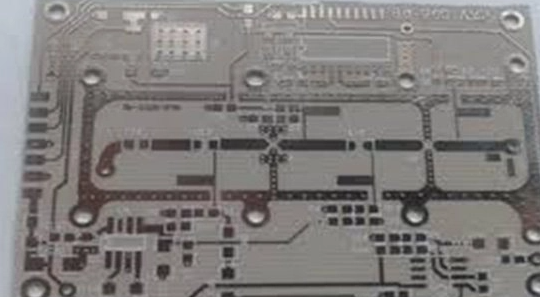
Manufacturing Challenges And Solutions For Taconic RF 35 PCB
The manufacturing of Taconic RF 35 PCBs presents a unique set of challenges that require specialized solutions to ensure optimal performance and reliability. Taconic RF 35 is a high-frequency laminate material known for its excellent electrical properties, making it a preferred choice for applications in the telecommunications, aerospace, and defense industries. However, the very characteristics that make Taconic RF 35 desirable also contribute to the complexities involved in its manufacturing.
One of the primary challenges in manufacturing Taconic RF 35 PCBs is the material’s sensitivity to temperature.
The high-frequency laminates are prone to dimensional stability issues when exposed to the elevated temperatures typically encountered during the PCB fabrication process. This sensitivity can lead to warping or delamination, which compromises the integrity of the final product. To mitigate this issue, manufacturers must employ precise thermal management techniques. This includes carefully controlled lamination cycles and the use of specialized equipment designed to maintain consistent temperatures throughout the process.
Another significant challenge is the material’s inherent brittleness.
Taconic RF 35 laminates are less flexible compared to traditional FR-4 materials, making them more susceptible to cracking during mechanical operations such as drilling and routing. To address this, manufacturers often utilize advanced drilling techniques, including the use of specialized drill bits and optimized feed rates, to minimize stress on the material. Additionally, implementing a multi-stage drilling process can help reduce the risk of cracks and ensure clean, precise holes.
The high-frequency nature of Taconic RF 35 also necessitates stringent control over the PCB’s electrical characteristics.
Variations in the dielectric constant and loss tangent can significantly impact the performance of high-frequency circuits. Therefore, manufacturers must ensure that the material properties are consistent across the entire PCB. This requires meticulous quality control measures, including regular testing and inspection of the laminate material before and after fabrication. Advanced testing equipment, such as network analyzers and time-domain reflectometers, are often employed to verify the electrical properties and ensure compliance with design specifications.
Furthermore, the adhesion of copper to Taconic RF 35 laminates poses another manufacturing challenge.
The surface energy of the laminate material can make it difficult for the copper foil to adhere properly, leading to issues such as poor peel strength and delamination. To overcome this, manufacturers typically employ surface treatment techniques such as plasma etching or chemical roughening to enhance the bond between the copper and the laminate. These treatments increase the surface roughness, providing a better mechanical anchor for the copper foil.
In addition to these technical challenges, the cost of Taconic RF 35 material is higher compared to conventional PCB materials.
This necessitates efficient material utilization and waste reduction strategies to keep production costs manageable. Manufacturers often optimize panel layouts and employ nesting techniques to maximize the use of the laminate material. Additionally, recycling and reusing scrap material can further contribute to cost savings.
In conclusion, the manufacturing of Taconic RF 35 PCBs involves addressing a range of challenges related to thermal management, mechanical brittleness, electrical consistency, copper adhesion, and cost efficiency. By employing advanced techniques and rigorous quality control measures, manufacturers can overcome these challenges and produce high-performance PCBs that meet the demanding requirements of high-frequency applications. The continuous evolution of manufacturing technologies and processes will undoubtedly further enhance the reliability and performance of Taconic RF 35 PCBs in the future.

